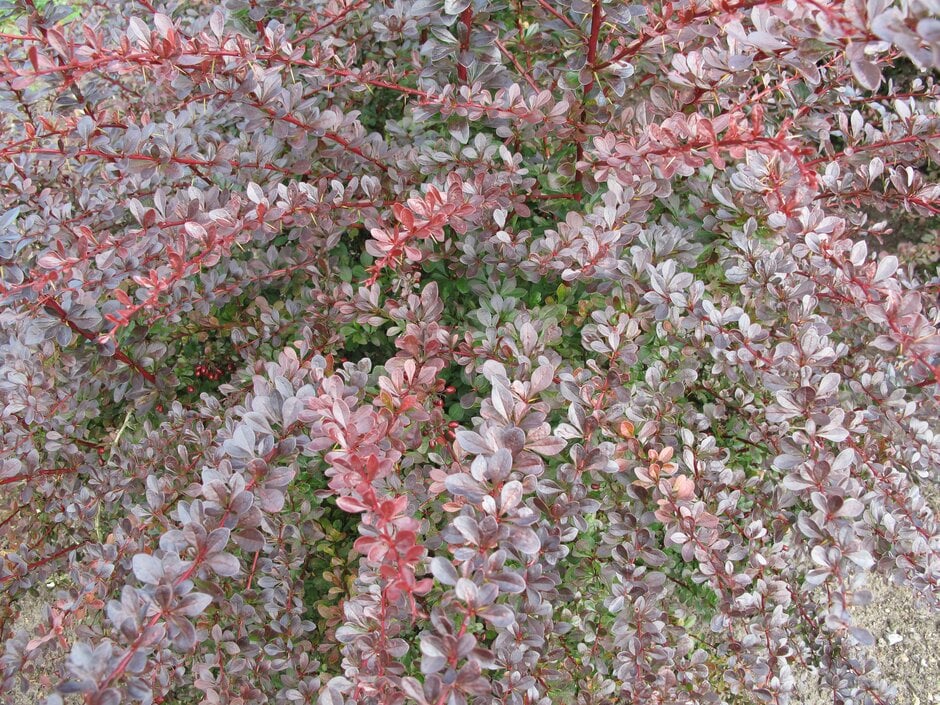Berberis thunbergii 'Kelleriis' (v)
Japanese barberry 'Kelleriis'
A spiny, compact shrub to about 1m. The small, rounded leaves are marbled green and white, the white areas turning pink then dark red in autumn. Small, hanging, yellow flowers in mid-spring are followed by narrow, bright red berries
Synonyms
Berberis thunbergii 'Green Marble'Berberis thunbergii 'Variegata'
see moreBerberis thunbergii 'Green Mantle'
Berberis 'Kelleriis'

Size
Ultimate height
0.5–1 metresTime to ultimate height
5–10 yearsUltimate spread
0.5–1 metresGrowing conditions
Moisture
Moist but well–drained, Well–drainedpH
Acid, Alkaline, NeutralColour & scent
| Stem | Flower | Foliage | Fruit | |
| Spring | Red Yellow | Green White Variegated | ||
|---|---|---|---|---|
| Summer | Green White Variegated | |||
| Autumn | Pink Red | Red | ||
| Winter |
Position
- Full sun
- Partial shade
Aspect
West–facing or South–facing or North–facing or East–facing
Exposure
Exposed or Sheltered Hardiness
H7Botanical details
- Family
- Berberidaceae
- Native to GB / Ireland
- No
- Foliage
- Deciduous
- Habit
- Bushy
- Potentially harmful
- Fruit are ornamental - not to be eaten. Wear gloves and other protective equipment when handling. Pets: Fruit are ornamental - not to be eaten - see the HTA guide to potentially harmful plants for further information and useful contact numbers
- Genus
Berberis can be deciduous or evergreen shrubs with spiny shoots bearing simple, often spine-toothed leaves, and small yellow or orange flowers in axillary clusters or racemes, followed by small berries
- Name status
Accepted
How to grow
Cultivation
Tolerant of a range of soils and locations, but grows best in any well drained soil in full sun or partial shade, though flowering and fruiting are best in full sun. See berberis cultivation for further advice
Propagation
Propagate from softwood cuttings or semi-hardwood cuttings
Suggested planting locations and garden types
- Coastal
- Cottage and informal garden
- Wildlife gardens
- City and courtyard gardens
- Hedging and screens
- Flower borders and beds
Pruning
Pests
May be susceptible to aphids and berberis sawfly
Diseases
May be susceptible to powdery mildews and sometimes by honey fungus
Love gardening
Sign up to receive regular gardening tips, inspiration, offers and more
View our Privacy Policy
Get involved
The Royal Horticultural Society is the UK’s leading gardening charity. We aim to enrich everyone’s life through plants, and make the UK a greener and more beautiful place.